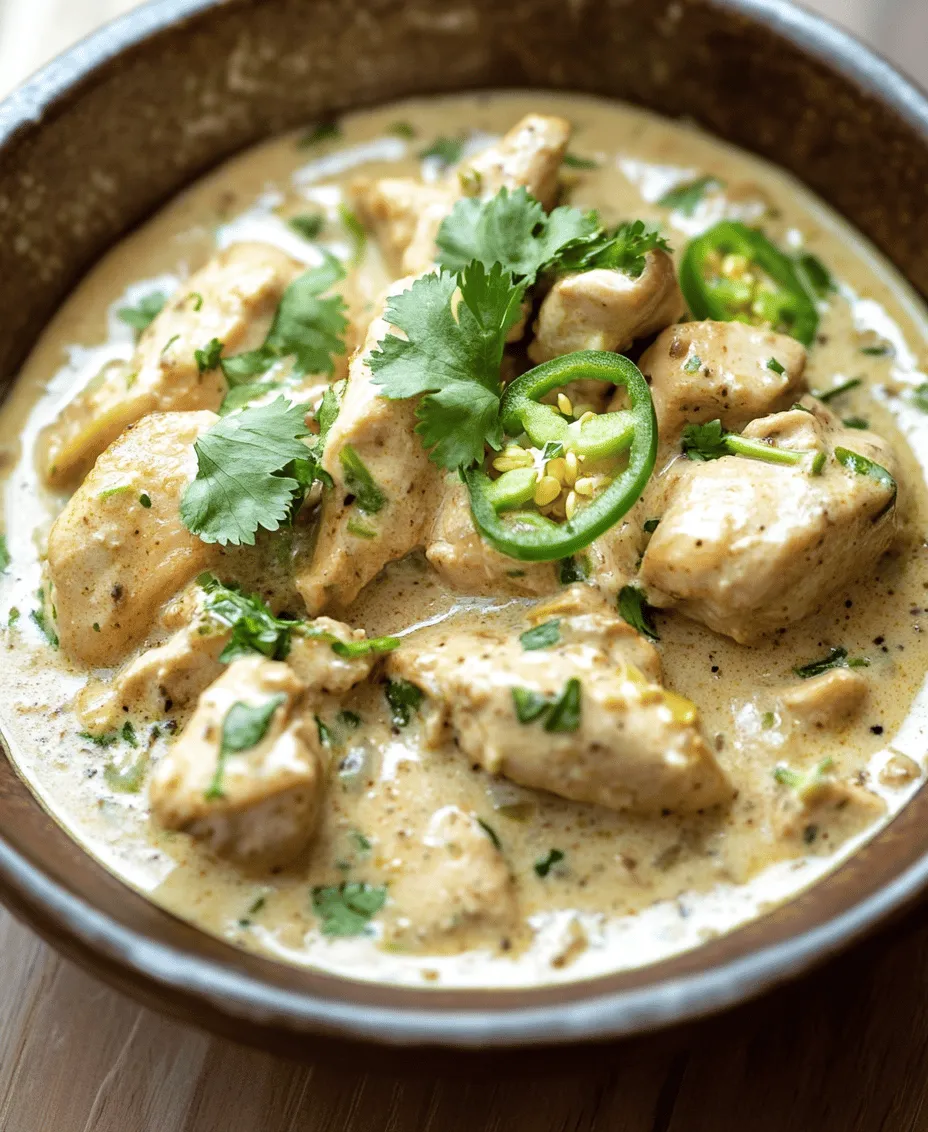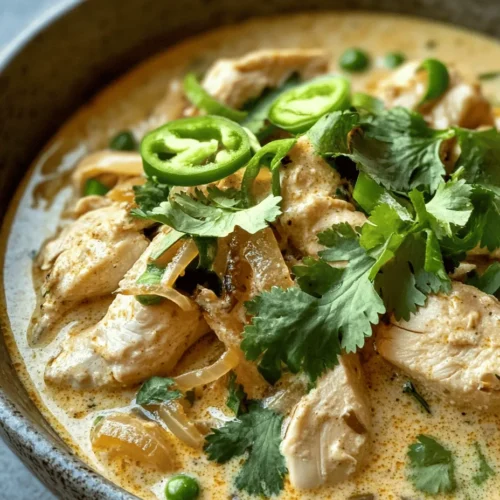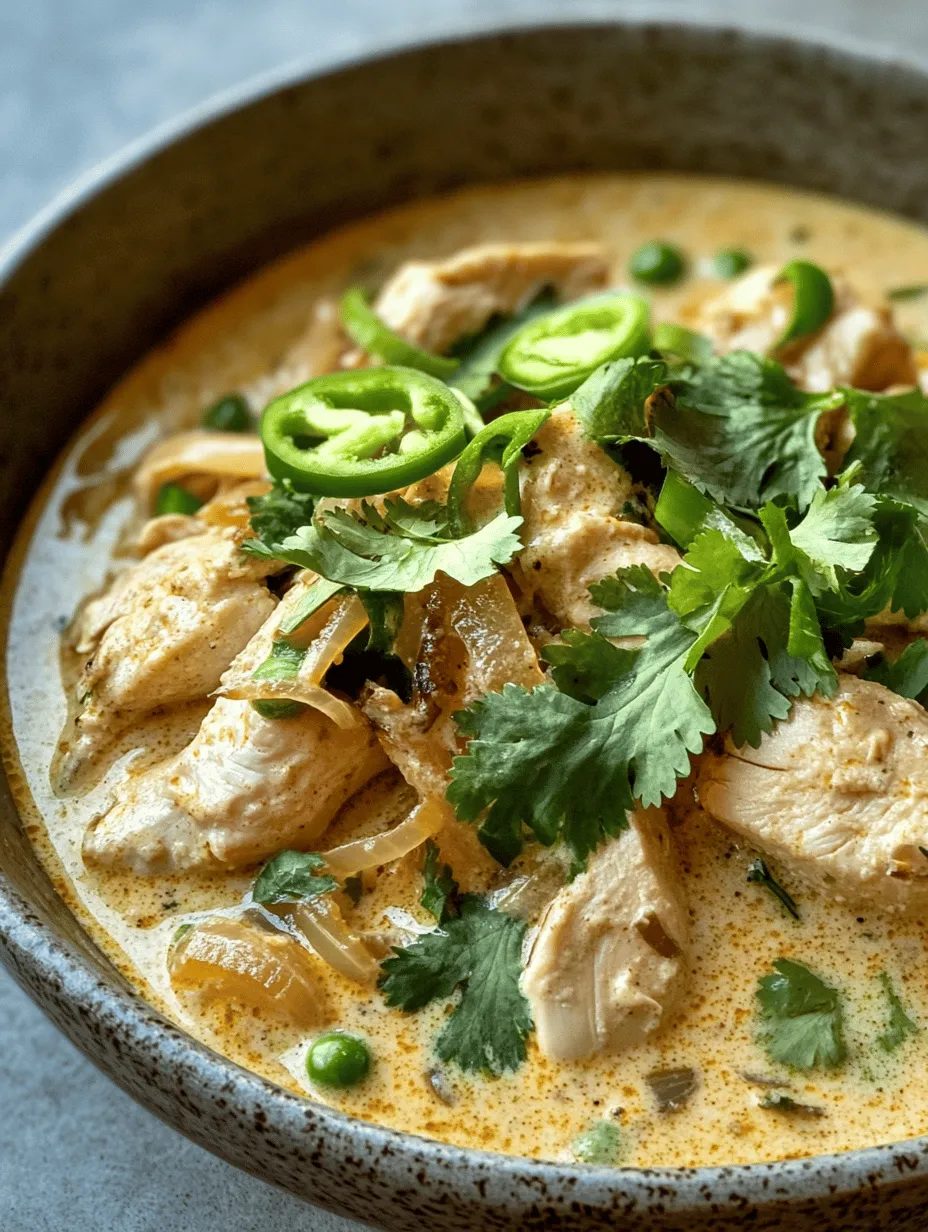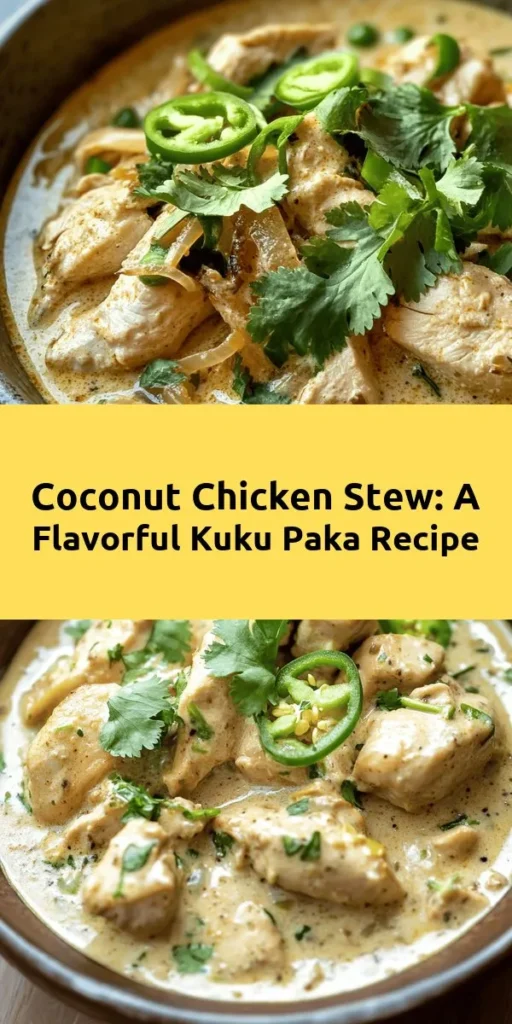Introduction
Kuku Paka is a delightful dish that beautifully embodies the spirit of East African cuisine, particularly influenced by the coastal regions of Kenya and Tanzania. This captivating chicken recipe is a perfect blend of cultures, flavors, and aromas, showcasing the unique culinary fusion that defines many East African dishes. Kuku Paka, which translates to “chicken in coconut,” captures the essence of tropical cooking through its rich use of coconut milk and a symphony of spices that create a truly sumptuous meal.
The appeal of Kuku Paka extends beyond its exotic ingredients; it is a dish that brings people together, making it an ideal choice for family gatherings, celebrations, or a comforting weeknight dinner. Whether you’re a casual home cook looking to spice up your dinner routine or a culinary enthusiast eager to explore new recipes, Kuku Paka offers a satisfying and flavorful experience that is sure to impress.
The Essence of Kuku Paka
Kuku Paka’s roots lie deep within the culinary traditions of East Africa, particularly along the Swahili coast where diverse cultures have influenced the local cuisine. The dish is a vibrant representation of the region’s rich history, combining African, Arab, and Indian flavors into a harmonious experience. The use of coconut milk is a hallmark of coastal African cooking, as coconuts thrive in tropical climates and lend their creamy texture and subtle sweetness to savory dishes.
Coconut milk is not just a key ingredient in Kuku Paka, but it also serves to enhance the overall profile of the dish. It acts as a base that carries and melds the flavors of the spices and aromatics, creating a luscious sauce that envelops the chicken. This creamy texture is complemented by the depth of flavor brought forth by a blend of spices that are essential to achieving the authentic taste of Kuku Paka. The careful balance of spices, from warm curry powder to earthy cumin and vibrant turmeric, results in a dish that is both comforting and complex.
In addition to its rich flavor profile, Kuku Paka holds cultural significance, often served during special occasions and gatherings. It is more than just a meal; it represents hospitality and the joy of sharing food with loved ones. This dish encapsulates the essence of community and celebration, making it a cherished recipe among families in East Africa and beyond.
Ingredient Breakdown
To create a truly unforgettable Kuku Paka, it’s crucial to understand the role of each ingredient in the dish. Here’s a closer look at the main components that come together to create this culinary masterpiece:
– Chicken: The star of the dish, chicken provides a hearty source of protein and serves as the canvas for the vibrant flavors of Kuku Paka. You can use bone-in, skin-on pieces for more flavor, or opt for boneless chicken thighs or breasts depending on your preference.
– Coconut Milk: This ingredient adds a luscious creaminess and a subtle sweetness that balances the spices and enriches the sauce. The creaminess of coconut milk is what makes Kuku Paka so comforting and indulgent.
– Onions, Garlic, and Ginger: These aromatics are the foundation of flavor in Kuku Paka. Sautéing them at the beginning of the cooking process releases their natural sweetness and adds depth to the dish. Garlic and ginger also provide a fragrant element that enhances the overall taste.
– Spices (Curry Powder, Turmeric, Cumin): These spices are essential for creating the authentic flavor profile of Kuku Paka. Curry powder brings warmth and complexity, while turmeric adds a beautiful golden hue and earthy notes. Cumin contributes a slightly nutty flavor, rounding out the spice blend.
– Green Chilies: For those who enjoy a bit of heat, green chilies are essential. They provide a kick of spice that balances the richness of the coconut milk, making each bite exciting. Adjust the quantity based on your heat preference.
– Tomato Paste: This ingredient adds acidity and richness to the sauce, helping to balance the creaminess of the coconut milk. It also contributes to the overall color and flavor depth of the dish.
– Fresh Cilantro and Lime Juice: These finishing touches bring brightness and freshness to Kuku Paka. Cilantro adds a herbaceous note that complements the spices, while a squeeze of lime juice at the end brightens the flavors and adds a zesty kick.
For those with dietary needs or preferences, Kuku Paka is adaptable. You can substitute chicken with tofu or chickpeas for a vegetarian version, and use light coconut milk to reduce the richness. If you’re looking for gluten-free options, ensure your spices and sauces are free from gluten. This flexibility allows anyone to enjoy the delightful flavors of Kuku Paka.
Preparation Steps for Perfect Kuku Paka
The journey to creating a mouthwatering Kuku Paka begins with marinating the chicken, a step that infuses the meat with flavor and tenderness. Proper marination is crucial for achieving the best results, so let’s delve into the detailed process:
1. Prepare the Marinade: In a large bowl, combine your choice of chicken pieces with a mixture of spices, including curry powder, turmeric, cumin, salt, and pepper. Add minced garlic and ginger to the bowl, along with a squeeze of lime juice to brighten the flavors. The acid from the lime juice not only enhances the taste but also helps tenderize the chicken.
2. Mix Thoroughly: Use your hands to massage the marinade into the chicken, ensuring that each piece is well-coated. This step is essential for ensuring that the flavors penetrate the meat, resulting in a more flavorful dish.
3. Marinate: Cover the bowl with plastic wrap or a lid and let the chicken marinate for at least 30 minutes at room temperature. For optimal flavor, consider marinating it in the refrigerator for 2-4 hours or even overnight. The longer the chicken marinates, the more flavorful it will become.
4. Sauté the Aromatics: Once the chicken is marinated, heat a large skillet or pot over medium heat and add a splash of oil. Once the oil is hot, add diced onions and sauté until they become translucent and fragrant. This will lay the foundation for your sauce.
5. Add Garlic and Ginger: Stir in minced garlic and ginger, cooking for an additional minute until they become aromatic. Be careful not to let them burn, as this can create a bitter flavor.
6. Brown the Chicken: Increase the heat slightly and add the marinated chicken pieces to the skillet. Sear the chicken on each side until golden brown, allowing the spices to develop and infuse the meat. This step not only adds flavor but also creates a pleasing texture.
7. Incorporate Tomato Paste: Once the chicken is browned, stir in tomato paste, cooking for a couple of minutes to deepen its flavor. This will also help to create a rich base for the sauce.
8. Add Coconut Milk: Pour in the coconut milk, stirring to combine all the ingredients. The coconut milk will create a creamy sauce that envelops the chicken, enhancing the overall richness of the dish.
As you continue with the subsequent steps, remember that each component plays a vital role in developing the flavors of Kuku Paka. The careful balance of spices, aromatics, and the creamy texture of coconut milk will transport you to the coastal regions of East Africa with every bite. The next steps will involve simmering the dish to allow the flavors to meld beautifully, but for now, savor the anticipation of this culinary journey.

Importance of Marination for Flavor Infusion
Marination is a critical step in preparing Kuku Paka, as it allows the chicken to soak up the flavors of the spices and ingredients used. This process not only enhances the taste but also helps tenderize the meat, resulting in a dish that bursts with flavor in every bite. The marinade, which typically includes ingredients like garlic, ginger, and spices, penetrates the chicken, ensuring that each piece is flavorful from the inside out.
Recommended Marination Times for Optimal Taste
For the best results, it’s recommended to marinate the chicken for at least 2 hours. However, if you have the time, marinating overnight in the refrigerator will yield even better flavor and texture. The longer the chicken sits in the marinade, the more pronounced the flavors become. Be sure to cover the chicken in an airtight container or a resealable plastic bag to prevent any contamination and to ensure the marinade coats all surfaces evenly.
Step-by-Step Guide to Cooking Onions for Proper Caramelization
The caramelization of onions is a key step in developing the rich, sweet undertones that complement the savory elements of Kuku Paka. Here’s how to achieve perfectly caramelized onions:
1. Heat the Oil: In a large skillet, heat 2 tablespoons of oil over medium heat. You can use vegetable oil or coconut oil for additional flavor.
2. Add the Onions: Once the oil is hot, add 2 large sliced onions. Stir them to coat with oil.
3. Cook Slowly: Reduce the heat to low and let the onions cook slowly for about 15-20 minutes, stirring occasionally. The goal is to allow the natural sugars in the onions to caramelize without burning.
4. Add Salt: After about 10 minutes, sprinkle a bit of salt over the onions. This helps draw out moisture and enhances the caramelization process.
5. Achieve a Deep Golden Color: Continue cooking until the onions are a deep golden brown, which can take up to 30 minutes in total. Once caramelized, set them aside to use later in the recipe.
Techniques for Browning Chicken for Enhanced Flavor
Browning the chicken is essential for adding depth of flavor to Kuku Paka. Here’s how to do it right:
1. Preheat the Pan: In the same skillet used for the onions, add a little more oil if needed and increase the heat to medium-high.
2. Sear the Chicken: Remove the marinated chicken from the refrigerator and shake off excess marinade. Place the chicken pieces skin-side down in the hot pan. Avoid overcrowding the pan; if necessary, cook in batches.
3. Brown on All Sides: Allow the chicken to sear undisturbed for about 4-5 minutes until golden brown. Turn the pieces to brown all sides. This step not only creates flavor through the Maillard reaction but also adds a beautiful color to the dish.
4. Remove and Set Aside: Once browned, remove the chicken from the pan and set it aside while you prepare the sauce.
Importance of Simmering for Tenderness and Sauce Development
Simmering is a vital part of the cooking process for Kuku Paka as it allows the chicken to finish cooking in the flavorful coconut sauce. Here’s how to properly simmer:
1. Combine Ingredients: After browning the chicken, add the caramelized onions back to the skillet along with the coconut milk and any remaining marinade.
2. Bring to a Boil: Stir to combine all the ingredients and bring the mixture to a gentle boil.
3. Reduce Heat: Once boiling, reduce the heat to low and return the chicken to the pan. Cover and let it simmer for 25-30 minutes. This slow cooking allows the chicken to absorb the flavors of the sauce while becoming tender and juicy.
4. Check for Doneness: Ensure the chicken reaches an internal temperature of 165°F (75°C) for safe consumption.
Tips for Adjusting Seasoning During Cooking
As with any recipe, adjusting seasoning is key to achieving the perfect balance of flavors in Kuku Paka. Here are useful tips:
1. Taste as You Go: After simmering for about 15-20 minutes, taste the sauce and adjust the seasoning as needed. If it lacks salt, add a pinch; if it needs more heat, sprinkle in some chili powder or fresh chili.
2. Add Fresh Herbs: Incorporate fresh herbs like cilantro or parsley towards the end of cooking for a burst of freshness. This can elevate the dish and provide a vibrant contrast to the rich flavors.
3. Balance Flavors: If the sauce is too rich or heavy, a splash of lime juice can brighten it up. Conversely, if it’s too acidic, a teaspoon of sugar can help balance the flavors.
Serving Suggestions
Kuku Paka can be enjoyed in a variety of ways, making it a versatile dish perfect for any occasion. Here are some recommendations for accompaniments and presentation:
– Accompaniments: Serve Kuku Paka with fragrant basmati rice, soft chapati, or ugali, which is a staple starch in East Africa. These sides help soak up the delicious sauce.
– Presentation and Garnishing: For a beautiful presentation, serve the chicken pieces in a large bowl or plate, spooning the coconut sauce generously over the top. Garnish with freshly chopped cilantro to add a pop of color and freshness.
– Pairing Suggestions: For beverages, consider pairing Kuku Paka with a light lager or a fruity white wine. If you prefer non-alcoholic options, a refreshing iced tea or coconut water complements the dish beautifully.
Nutritional Insights
Kuku Paka not only delights the palate but also offers a range of nutritional benefits:
– Nutritional Profile: The dish is rich in protein from the chicken and healthy fats from the coconut milk. Depending on the serving size, a typical serving of Kuku Paka may contain around 300-400 calories, with a good balance of carbohydrates, proteins, and fats.
– Benefits of Coconut Milk and Spices: Coconut milk is a source of medium-chain triglycerides (MCTs), which are known for their health benefits, including improved metabolic rates and potential weight loss. The spices used, such as turmeric and ginger, also offer anti-inflammatory properties.
– Dietary Considerations: Kuku Paka can be adapted for various dietary restrictions. For a gluten-free option, simply ensure that the accompanying sides are free of gluten. To make it dairy-free, this recipe is already suitable as it uses coconut milk instead of cream. For a vegetarian version, replace chicken with tofu or chickpeas and adjust cooking times accordingly.
Cultural Significance and Variations of Kuku Paka
Kuku Paka is not just a dish; it is a representation of the rich culinary heritage of East Africa. Its origins lie in the coastal regions, particularly among Swahili communities. Here’s a deeper look into its cultural significance:
– Regional Variations: Different regions may have their unique twists on Kuku Paka. In some areas, you might find the addition of citrus zest or tamarind for a tangy kick. In others, local spices or herbs may be used to create distinct flavors.
– Family Gatherings: Kuku Paka is often served during family gatherings and celebrations, symbolizing togetherness and hospitality. It brings people together around the table, where stories and laughter are shared.
– Cultural Adaptations: As cultures blend, Kuku Paka has seen adaptations in various forms. In many households, you might find this dish paired with local ingredients that reflect the family’s heritage, showcasing the dish’s versatility and ability to adapt.
Conclusion
Kuku Paka is a delightful fusion of flavors and cultural heritage, offering a culinary adventure that transports you to the vibrant coasts of East Africa. With its rich coconut sauce, tender chicken, and aromatic spices, every bite is a celebration of taste and tradition.
This dish not only fills your stomach but also nourishes the soul, reminding us of the joy of cooking and sharing meals with loved ones. Whether you’re preparing Kuku Paka for a family gathering or simply indulging in a culinary experience at home, we encourage you to explore this remarkable dish and the stories that accompany it. Embrace the flavors, enjoy the process, and savor the moments spent around the dining table, because food is not just about sustenance; it’s about connection.



